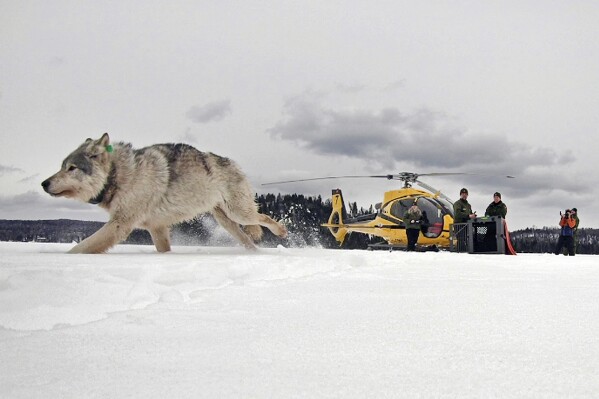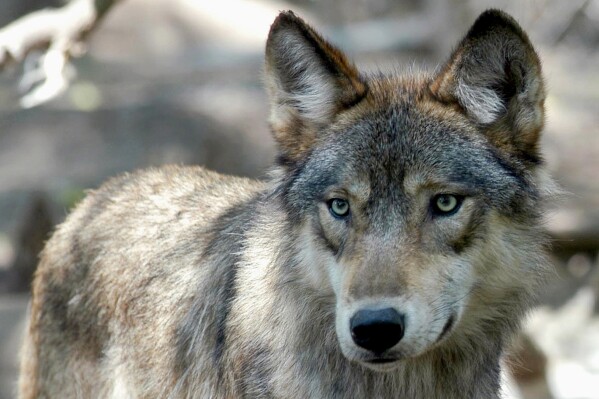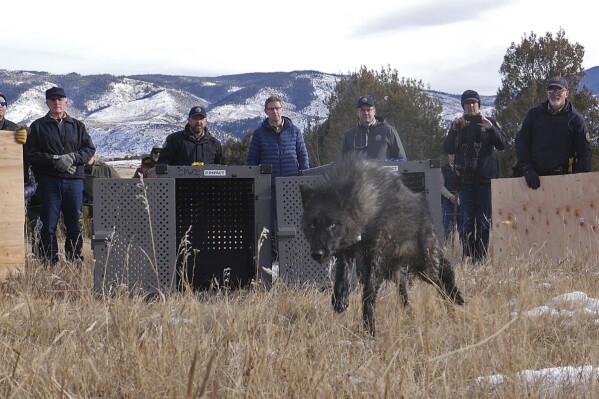Feds won’t restore protections for wolves in Rockies, western states, propose national recovery plan
Federal wildlife officials on Friday rejected requests from conservation groups to restore protections for gray wolves across the northern U.S Rocky Mountains, saying the predators are in no danger of extinction as some states seek to reduce their numbers through hunting.
The U.S Fish and Wildlife Service also said it would work on a first-ever national recovery plan for wolves, after previously pursuing a piecemeal recovery in different regions of the country. The agency expects to complete work on the plan by December 2025.
The rejection of the conservation groups’ petitions allows state-sanctioned wolf hunts to continue in Idaho, Montana and Wyoming. They estimated the wolf population in the region that also includes Washington, California and Oregon stood at nearly 2,800 animals at the end of 2022.
“The population maintains high genetic diversity and connectivity, further supporting their ability to adapt to future changes,” the agency said in a news release.



Conservationists who have been working to bring the wolf back from near-extinction in the U.S. blasted the decision, complaining that Idaho and Montana have approved increasingly aggressive wolf-killing measures including trapping, snaring and months-long hunting seasons.
“We are disappointed that the U.S. Fish and Wildlife Service is refusing to hold the states accountable to wolf conservation commitments they made a decade ago,” said Susan Holmes, executive director of the Endangered Species Coalition.
Antipathy toward wolves for killing livestock and big game dates to early European settlement of the American West in the 1800s, and it flared up again after wolf populations rebounded under federal protection. That recovery has brought bitter blowback from hunters and farmers angered over wolf attacks on big game herds and livestock. They contend protections are no longer warranted.
Congress stripped Endangered Species Act protections from wolves in western states in 2011. The Trump administration removed Endangered Species Act protections for wolves across the lower 48 states just before Trump left office in 2020.
A federal judge in 2022 restored those protections across 45 states, but left wolf management to state officials in Idaho, Montana, Wyoming and portions of Oregon, Washington and Utah.
Republican lawmakers in Montana and Idaho are intent on culling more wolf packs, which are blamed for periodic attacks on livestock and reducing elk and deer herds that many hunters prize.
The states’ Republican governors in recent months signed into law measures that expanded when, where and how wolves can be killed. That raised alarm among Democrats, former wildlife officials and advocacy groups that said increased hunting pressure could cut wolf numbers to unsustainable levels.
The Humane Society of the U.S., Center for Biological Diversity and other groups had filed legal petitions asking federal officials to intervene.
Despite the hunting pressure that they are under in some states, wolves from the Nothern Rockies region have continued to expand into new areas of Washington, Oregon, California and Colorado. Colorado this winter also began reintroducing wolves to more areas of the state under a plan mandated by voters under a narrowly approved 2020 ballot initiative.
There is continued political pressure to remove protections for wolves in the western Great Lakes region. When protections were briefly lifted under the Trump administration, hunters in Wisconsin using hounds and trappers blew past the state’s harvest goal and killed almost twice as many as planned.
Disclaimer: The copyright of this article belongs to the original author. Reposting this article is solely for the purpose of information dissemination and does not constitute any investment advice. If there is any infringement, please contact us immediately. We will make corrections or deletions as necessary. Thank you.







